Fitting a curtain pole
Fitting a curtain pole is a straightforward job but you do need to know what the wall structure is so that you use the correct type of wall plug and fixing. For more information on this, check out my guides ‘Fixing into masonry walls’Â and ‘Fixing into hollow walls’. In terms of positioning the pole, there is no hard and fast rule, as you simply need to position it so that it looks right in the space available above the window. However, as a general rule, it should be positioned halfway between the horizontal edge above the window recess, and the coving or ceiling. Use a cable, pipe and stud detector to help find safe fixing positions when fitting a curtain pole.
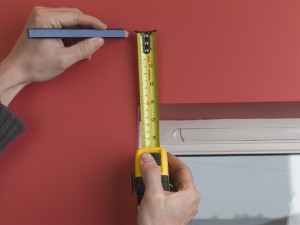 |
1. Measure 10-15cm above the window recess according to your preference and the space available, and mark the pole height above the window. |
 |
| 2. Use a spirit level to draw a guideline from one side to the other and extend beyond the window on either side to accommodate the positions of the supporting brackets. Note that the top of the window recess might not be level, so the line you draw might not be the same distance above the recess on both sides. (You can clearly see the pencil line here and that is done for illustrative purposes. When you do it, a hard line is not necessary and so if you literally go barely visible, it is simple to rub out!) |
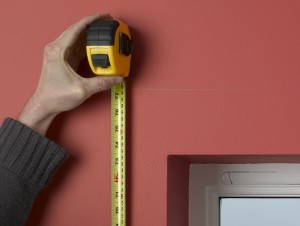 |
3. With curtains of a specific length, work out the fixing height of the brackets so that the bottom of the curtain will sit where you want it to. |
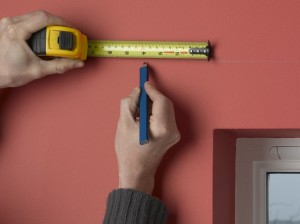 |
4. Measure and mark the bracket position – about 15cm from either side of the window recess, depending on the finished curtain width. |
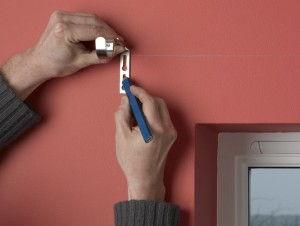 |
5. Position brackets and mark fixing holes. Double-check height from floor to bracket fixing points to ensure it is correct for the curtain fall. |
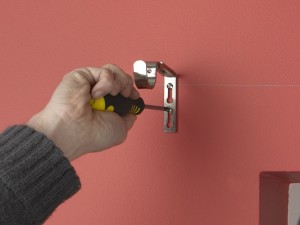 |
6. Drill pilot holes for fixings and use the appropriate wall plugs, depending on wall type and weight of pole and curtains. Fix the brackets in place. |
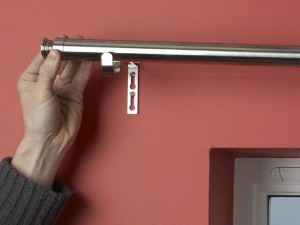 |
7. Adjust pole length to extend a few centimetres beyond the support brackets. Cut wooden poles if needed and extend metal poles telescopically. |
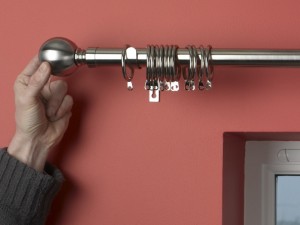 |
8. Thread the curtain rings onto the pole, leaving one outside each support bracket to secure the curtains, and fix the finials in place on either end. |
Curtain pole tips
- Brackets should never be fitted above light switches, power sockets or central heating pipes.
- Make the most of daylight, and allow it to flood into the room, by fitting curtain pole and track brackets far enough away from the window edge so that when drawn, curtains are away from the window recess and they do not block out any light.
- The most common material for curtain poles are wood or metal. Fitting guidelines are basically the same, but all manufacturers will provide instructions for their particular poles. Bracket design will often vary, and therefore there can often be slight differences in fitting technique compared to that shown in the sequence above.
- When fixing into walls, you’re nearly always going to need a drill. Find plenty of advice on the best options available in my cordless drill buying guide.
Buying curtain poles
Size is obviously the first consideration when buying poles. Don’t make the simple mistake of using the window recess width as your pole length requirement – the fitting sequence above clearly shows how you need the poles to be considerably longer than the recess width. Metal poles tend to have telescopic adjustment, whereas wooden ones are often cut down to size with a fine toothed saw. For wide windows, poles will generally have an extra central support bracket, and for heavy curtains you will need a large diameter pole so check any weight guidelines that the pole manufacturer may provide.
For me the clear market leaders are John Lewis. If you check out their curtain pole kits, I think for the price and quality, you’d be hard pushed to find better. All the DIY sheds of course have their ranges, but put it this way, when a customer hands me some curtain poles to put up at the end of a job, I’m always very pleased to see that they’re form John Lewis.
